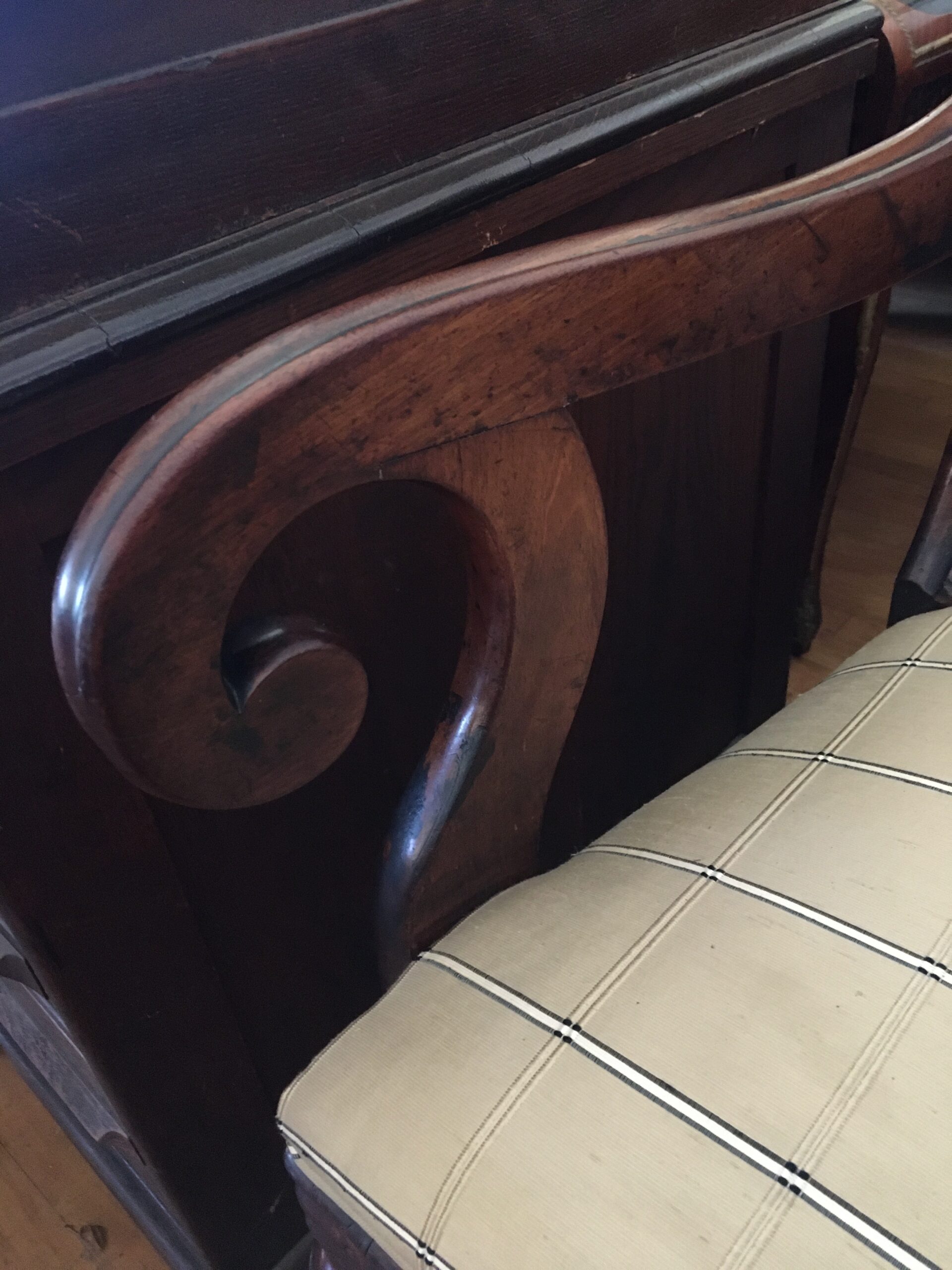- admin
- Jul, 20, 2020
- Chair, Post, Restoration
- No Comments
Sometimes a tenon is broken perpendicularly to the wood fibers, this is what we call a fracture. There is tremendous pressure on chairs joinery. Therefore, for those joints to uphold that kind of strain, it needs structure. Common mistakes would be to drive nails or screws to fasten the parts together creating underlying conditions for future fracture lines to come. To repair such a break it needs a “faux-tenon”.
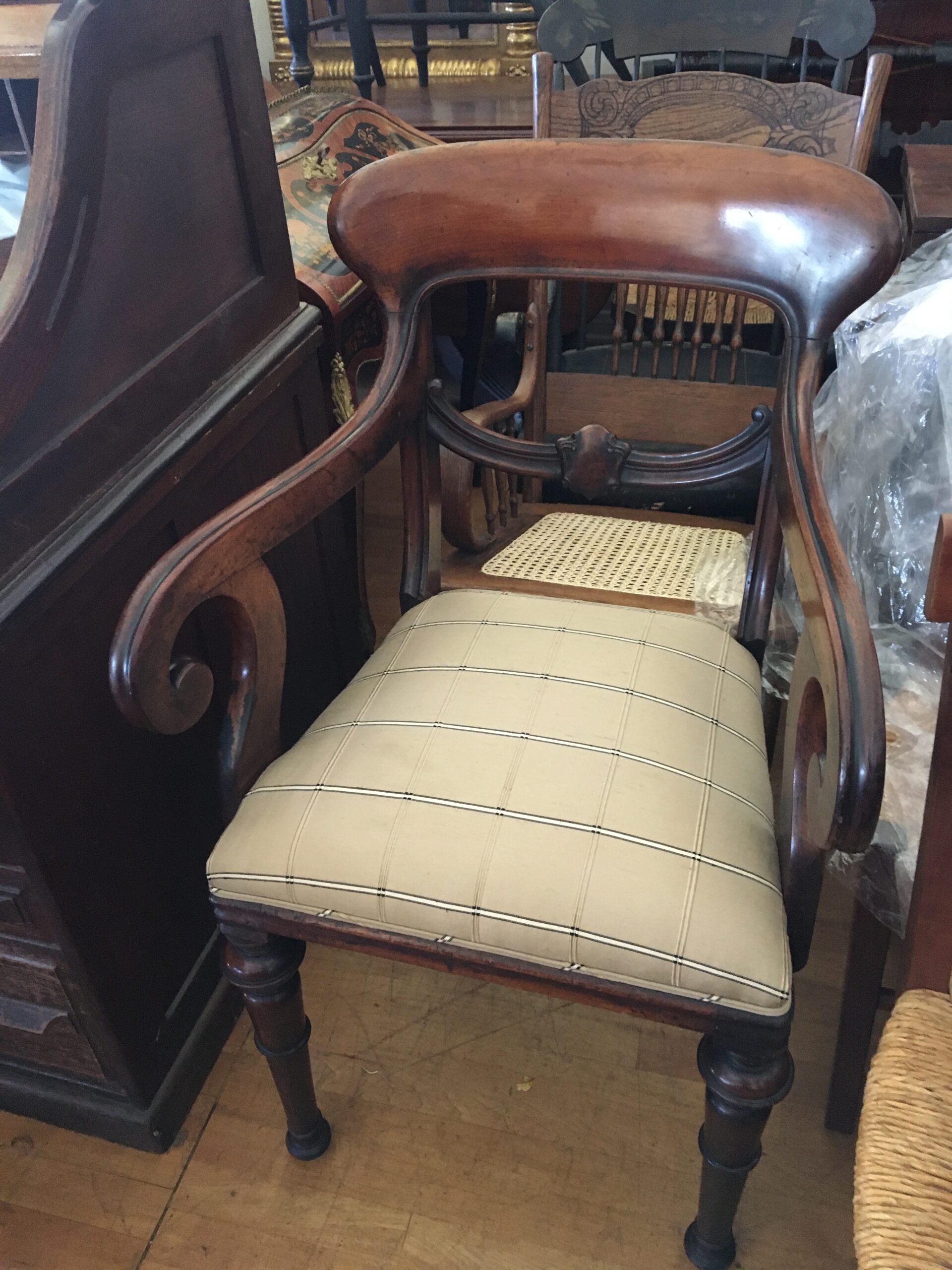
First, we clean the joints by removing the old plastic glue and re-creating a level surface for the joinery.
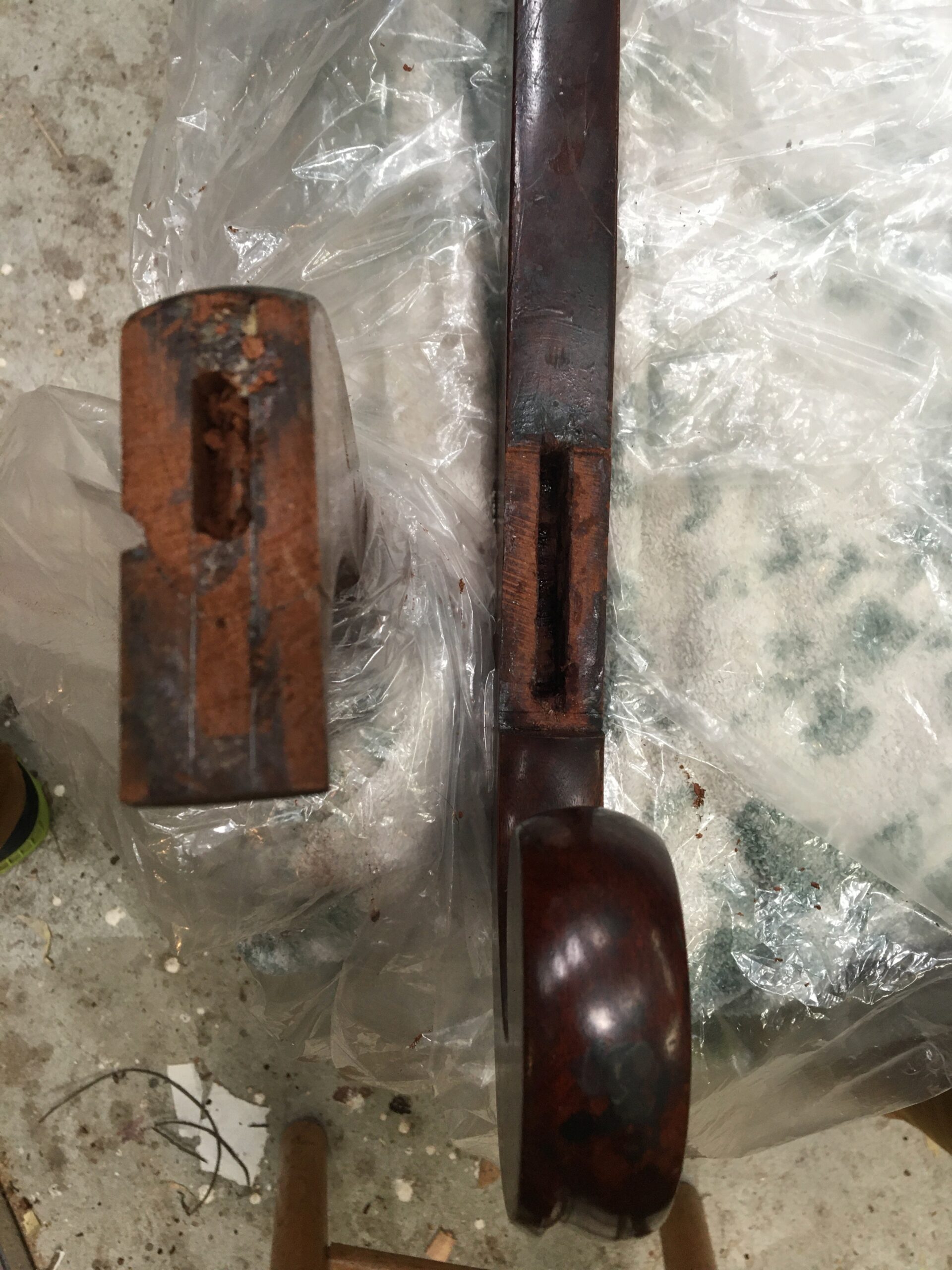
To make a faux-tenon you need to create a second mortise where the original tenon used to be. There will be 2 mortises to set an independent double-headed tenon. The joint needs to be tight and clean, to rely on the wood fibers strength.
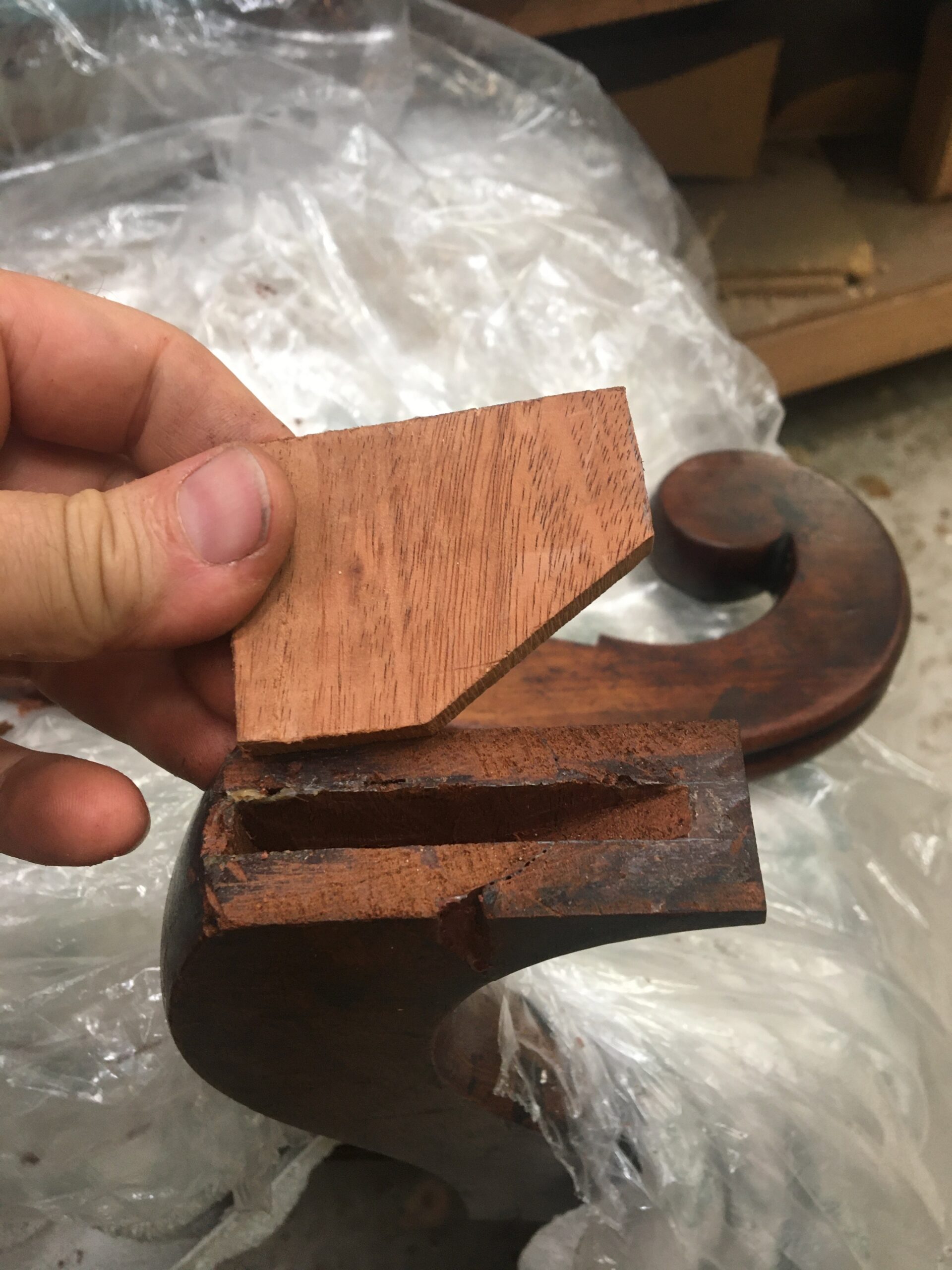
I always dry-fit all my gluing and prepare forms, blocks, and clamps ahead of time. I have been described as anal, I prefer the term prepared.
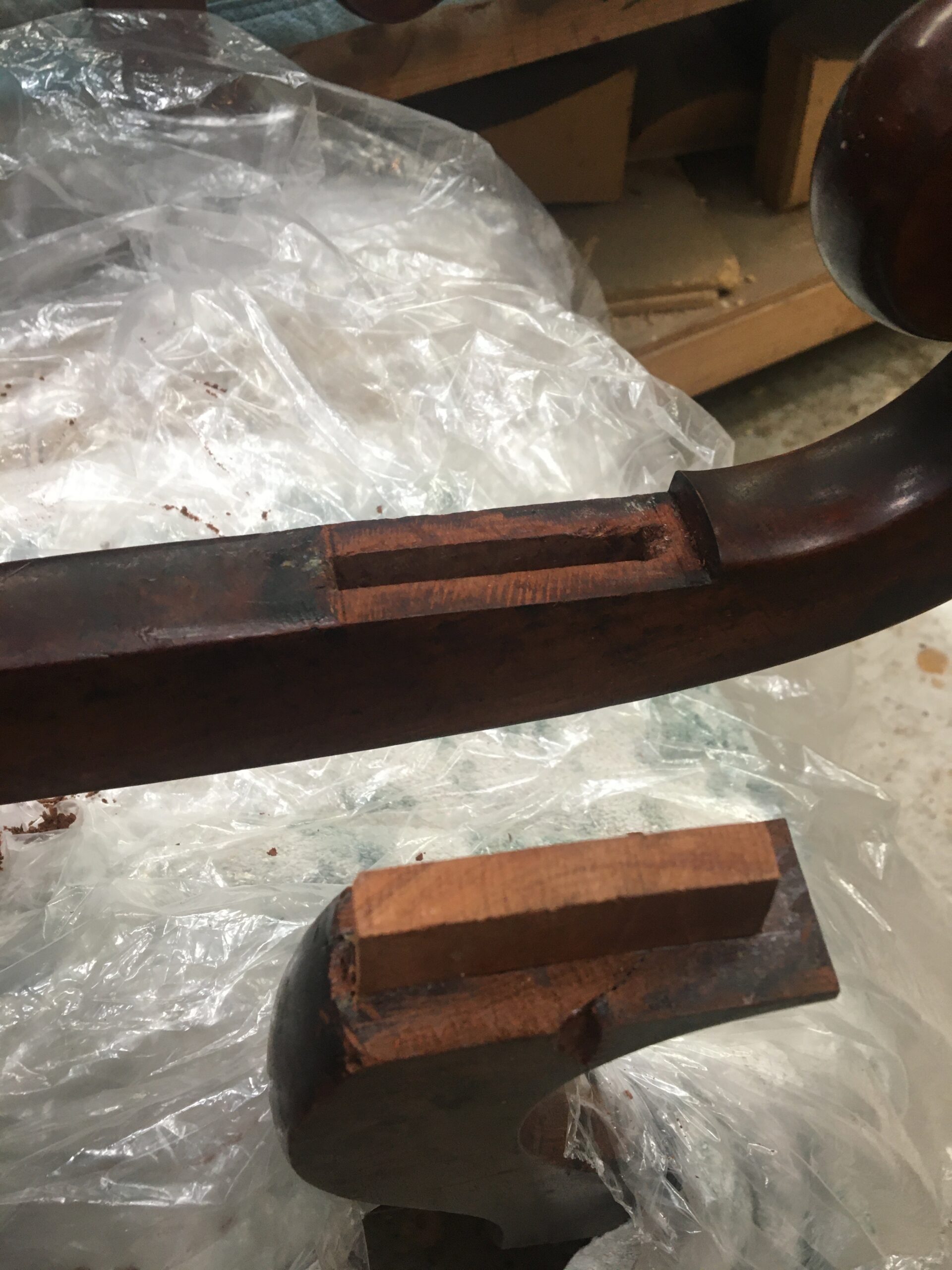
Among the guidelines from the AIC (American Institute for Conservation), the use of a reversible glue is paramount. In this particular case, I chose to use Old Brown Glue, a liquid hide glue that has a longer open time than hot hide glue, giving me more time to secure a perfect joinery clamping before the adhesive sets.
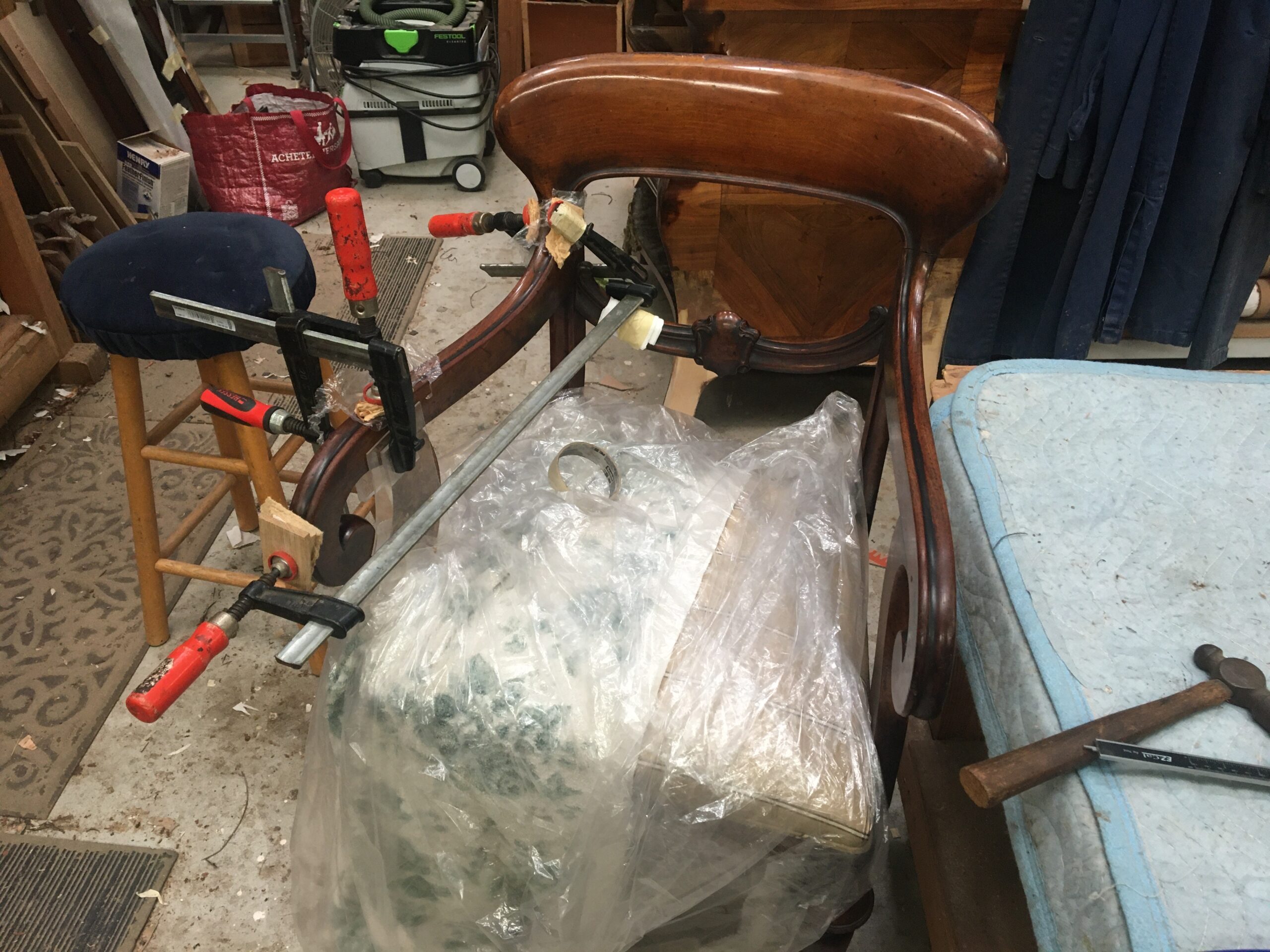
Another advantage of using a protein glue is that we do not need solvents to clean it, therefore protecting the original finish.

The arm of the armchair is now securely glued relying again on a proper, structural joint.
